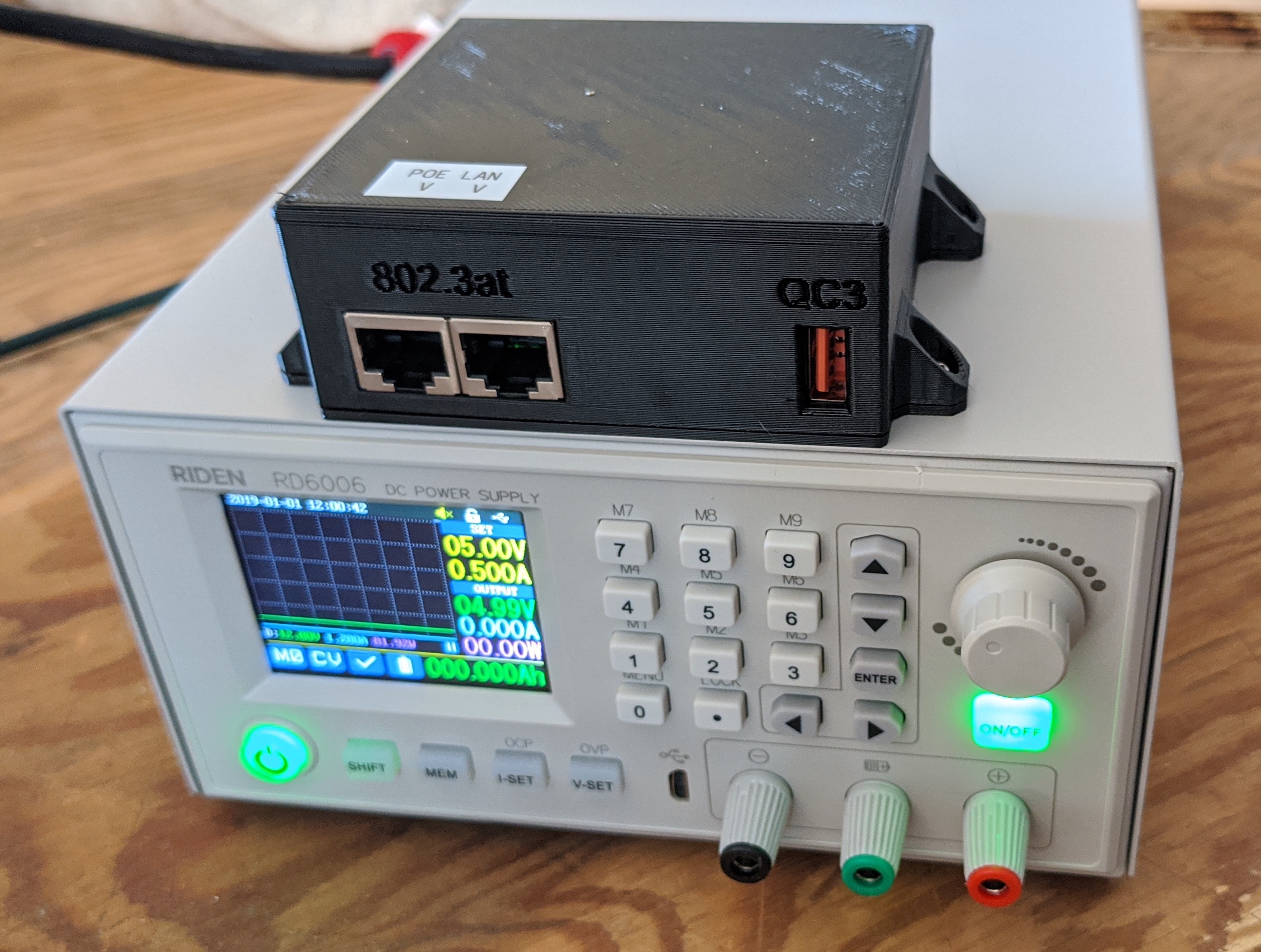
PoE and QC3.0 adapter for RD6006 PSU
prusaprinters
<p>A small enclosure for a PoE injector and QC 3.0 charger designed to sit on top of the RD6012 PSU ‘kit’ sold all over aliexpress and banggood.</p> <p>PoE injector is nice to have from time to time and QC3.0 is useful doe charging devices and powering my soldering iron.</p> <p>There are two components for this build:</p> <ol> <li><p>the ‘plate’ which rests on the top of the PSU case and has small ‘fences’ to fix the circuit boards in place. It’s the ‘salmon’ colored component</p> </li> <li><p>the ‘lid’ is the (mostly) transparent yellow component which holds the auxiliary power supplies (pink components) in place and keeps all voltages away from people.</p> </li> </ol> <p>I used black PETG, but any material and at least 10% infill should be fine. Tune the layer height to taste.</p> <p>The ‘plate’ does not need any supports nor does the lid if printed in the suggested print orientation. I printed with settings optimized for speed so there was minimal sagging, but nothing substantial. What little there was didn’t interfere with clearance of any other internal component and was completely hidden.</p> <p>If you’re not comfortable with bridging long distances, you can optionally enforce support material from the build plate to the top of the lid or flip the lid upside down and use supports for the four feet where the screws go. Because any sagging would be hidden inside,</p> <h3>Assembly</h3> <p>I don't have any pictures from the assembly, but it's not particularly difficult to figure out from the attached pictures. In general, the steps to take are:</p> <ol> <li>Print everything and clean up the parts as needed</li> <li>de-shell the PoE injector and QC3 charger. A plastic pry-tool or a few flat-head screwdrivers will help here!</li> <li>desolder the existing mains connections from both modules and solder on new ones. The new ones don't need to be long, just a bit longer than the leads that came on the module PCBs!</li> <li>disconnect power from the assembled PSU and remove the case cover</li> <li>place the 'plate' onto the top of the PSU and use a pencil to mark all 5 holes on the cover</li> <li>remove the plate, drill out all 5 holes and use a file to smooth down any sharp edges on the big hole as that's where the mains wires will go. A burr poking through insulation means the case may become energized @ mains voltages!</li> <li>crimp connectors onto wires and attach to the mains supply <strong>after</strong> the switch and fuse!</li> <li>place the 'plate' back onto the PSU cover</li> <li>run the wires through the new hole in the top of the PSU case and through the hole in the 'plate'</li> <li>add the PoE injector and QC3 module to the plate</li> <li>join the mains leads to the module leads. I used <a href="https://www.amazon.com/Wago-221-413-LEVER-NUTS-Conductor-Connectors/dp/B06XGYXVXR/">Wago</a> connectors, but simple wirenuts or a screw terminal block will work.</li> <li>Use M3 screws to secure the lid to the plate and the PSU. I intentionally drilled the holes slightly too small so the screws would thread against the case. Not ideal, but works absolutely fine for something that's not load-bearing or going to be repeatedly re-screwed.</li> <li>re-connect the IEC power connector and power on</li> <li>monitor for sounds and smells that indicate you screwed up. begin testing PoE and USB port for proper power.</li> </ol> <p>A copy of the files can be found here: <a href="https://karlquinsland.com/2020/07/electronics-lab-enhanced-psu/">https://karlquinsland.com/2020/07/electronics-lab-enhanced-psu/</a></p>
With this file you will be able to print PoE and QC3.0 adapter for RD6006 PSU with your 3D printer. Click on the button and save the file on your computer to work, edit or customize your design. You can also find more 3D designs for printers on PoE and QC3.0 adapter for RD6006 PSU.
